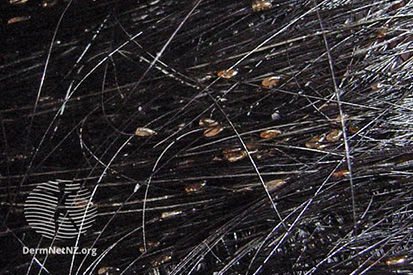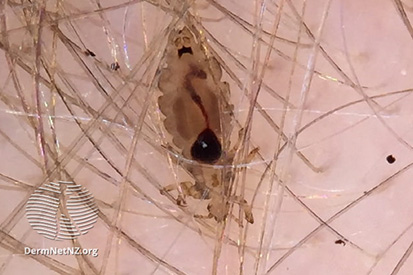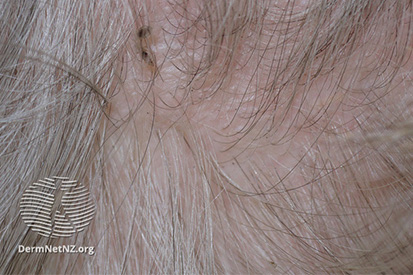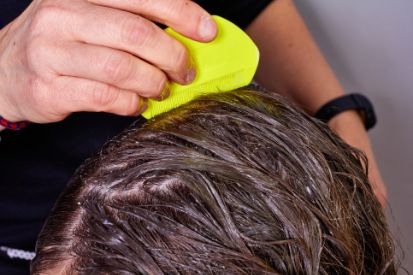Head Lice
While head lice are a troublesome nuisance, it's essential to note that they do not carry or spread diseases and typically do not cause serious medical problems. It's crucial to address head lice promptly to prevent their rapid spread within communities. Dermatology Associates & Surgery Center providers are here to provide guidance on effective treatments for head lice.
Examples of Head Lice





What are the Symptoms of Hair Lice?
- Discovering head lice typically begins with intense itching.
- You can identify tiny eggs resembling dandruff flakes in the hair before the onset of itching.
- To spot live eggs, closely examine the base of the hair, near the scalp, preferably under strong lighting conditions.
- Further signs may manifest as small, red bumps on the scalp, neck, or shoulders.
- Bumps may evolve into scaly patches or begin oozing.
Causes of Hair Lice
- Head lice is primarily transmitted from one person to another through direct physical contact.
- This easily transmissible infestation often occurs in close-knit environments, such as schools or households.
- The common mode of transmission involves lice crawling from the hair of an infected person to the hair of someone in close proximity.
How to Prevent Hair Lice
- Avoid Direct Head-to-Head Contact
- Educate About Personal Items: Stress the importance of not sharing personal items such as combs, brushes, hats, scarves, headphones, or any other items that come in contact with the hair.
- Regularly Clean Personal Items: Wash and clean personal items that come in contact with the hair, especially if they are shared among individuals.
- Use Protective Hairstyles: Keeping hair tied up or styled in a way that minimizes direct hair-to-hair contact.
- Routine Head Checks: Periodically check for signs of lice, such as itching, red bumps, or the presence of lice or eggs in the hair.
- Limit Personal Items in Shared Spaces: In communal spaces like schools or daycare centers, limit the sharing of personal items.
- Teach Proper Hygiene
- Be Informed: Stay informed about potential lice outbreaks in your community, especially if you have children in school.
Head Lice FAQs
Yes, dermatologists can effectively diagnose and treat head lice. They may recommend specific medicated shampoos, lotions, or prescription medications designed to eliminate lice.
Dermatologists may prescribe medications containing permethrin, pyrethrin, or malathion, which are designed to kill head lice and their eggs. The choice of medication depends on factors such as the patient's age, health, and any known sensitivities.
Head lice cannot survive for an extended period away from the scalp. They rely on human blood for nourishment. Items like hats, brushes, or bedding may be potential sources of transmission but are not long-term habitats for lice.
After undergoing effective treatment and ensuring that no live lice are present, individuals can typically return to school or work. It's important to follow school or workplace guidelines, which may vary.
How to Treat Hair Lice
Your dermatologists can assist with head lice by providing guidance on effective treatments and helping manage potential complications. In some cases, prescription medications may be necessary. Additionally, dermatologists can provide support and address any skin-related issues that may arise due to scratching or irritation caused by head lice.
Featured Products

CLn Healthy Scalp Shampoo
CLn Shampoo includes salicylic acid and sodium hypochlorite, and is designed for flakey scalps. It is an effective shampoo for normal-to-oily scalp and skin. Designed for scalp and skin prone to folliculitis, dermatitis, dandruff, beard dandruff and acne. 12 fl oz / 354 mL

Nutrafol Root Purifier Scalp Microbiome Shampoo
A physician-formulated, hydrating shampoo that visibly improves hair volume, strength, and texture in 2 weeks. Made with natural ingredients that deeply cleanse thinning hair without stripping the scalp.
